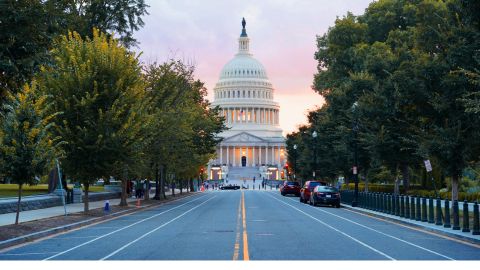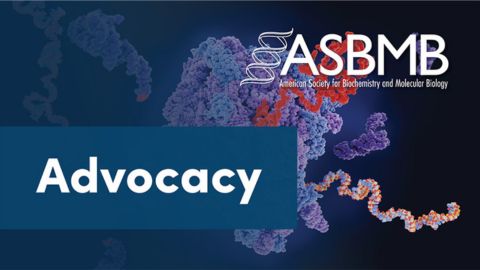What scientists need to know about NIH’s simplified peer review framework
The National Institutes of Health will begin using a new peer-review framework for grant applications due Jan. 25, 2025, and beyond. So what do applicants need to know?
First of all, Mark Caprara, the executive implementation committee co-chair for NIH, reassured the scientific community at an online briefing Nov. 3, that there are few changes for investigators. NIH isn’t overhauling how applications are constructed. The framework will, however, affect how applications are evaluated.
The framework will focus the reviewer’s attention on three main questions: Should it be done? Can it be done? And will it be done?
Three-factor review process
To understand the new approach, you need to know a little about the existing one.
In the current framework, the five criteria are significance, innovation, approach, investigator(s) and environment. Each criterion is scored individually and then factored into an overall impact score.
Also, there’s another set of information that is evaluated under the banner of “additional review criteria.” (More about that later.)
The simplified criteria will focus reviewers on three central factors:
Factor 1: Importance of the research
-
Reviewers will evaluate the significance and innovation.
-
Reviewers will give a score between one and nine.
Factor 2: Rigor and feasibility
-
Reviewers will evaluate the approach.
-
Reviewers will evaluate the inclusion criteria and coding, study timelines for clinical trial applications, and plans for valid design and analysis of phase III clinical trials, all of which are currently considered additional review criteria.
-
Reviewers will give a score between one and nine.
Factor 3: Expertise and resources
-
Reviewers will evaluate the investigator(s) and environment.
-
This factor is unscored but will be used as a binary item to determine if the expertise and environment are sufficient for the proposed project.
All three factors will be considered by reviewers when determining an overall impact score to reflect their assessment of the project exerting a “sustained, powerful influence on the research field(s) involved.”
More on ‘additional review criteria’
If applicable to the proposed project, the following items will be reviewed at the first level of the grant review process: authentication of key biological and/or chemical resources and budget and period of support. These documents will be unscored and not considered for the overall impact score.
In addition, if applicable to the proposed project, the following documents will be reviewed at the first level of the grant review process: human subject protections, vertebrate animal protections, biohazards, resubmissions, renewals and revisions. These documents will be unscored and considered for the overall impact score.
The NIH staff will also assume administrative responsibilities for the following additional review criteria documents: foreign organizations, select agents research and resource sharing plans. NIH staff will evaluate these documents at the second level of the review process.
How we got here
NIH developed the new framework to reduce undue influence of scientific reputation and minimize the administrative burdens for peer reviewers.
Related links
The National Institutes of Health has a new, simplified peer-review framework for evaluating research grants. It’ll go into effect for applications submitted Jan. 25, 2025, and beyond.
Learn more from these source materials:
- NIH’s request for information
- ASBMB’s recommendations
- NIH announces simplified framework
- NIH’s simplified framework webpage
- NIH’s online briefing
Last year, it sought feedback from the scientific community about a draft simplified framework.
Ann West is the associate vice president for research development and a professor at the University of Oklahoma. She leads the American Society for Biochemistry and Molecular Biology’s Public Affairs Advisory Committee.
“This is a big change for the NIH, reviewers and applicants alike. The (Center for Scientific Review) reached out to the research community, including professional societies like the ASBMB, for input while they were considering these changes. It may take some time to adjust, but, overall, I think the simplified model will be fair and more inclusive,” West said.
The ASBMB submitted its feedback in March.
NIH announced the final framework Oct. 19.
Timeline for educating grant reviewers
NIH has a webpage serving as a central repository of information, and agency officials are using various channels to inform the scientific community about the changes, including the NIH Guide, CSR Review Matters and Open Mike.
NIH officials say they will be training program staff in 2024 and 2025 to ensure transparency in the evaluation process. Reviewer training is scheduled for the spring of 2025, just before the summer review meetings.
Watch the NIH webinar and presentation slides to learn more.
Enjoy reading ASBMB Today?
Become a member to receive the print edition four times a year and the digital edition monthly.
Learn moreGet the latest from ASBMB Today
Enter your email address, and we’ll send you a weekly email with recent articles, interviews and more.
Latest in Policy
Policy highlights or most popular articles

Councilors advocate for science on Capitol Hill
ASBMB Councilors meet with their elected officials to advocate for basic scientific research funding and training the next generation of scientists.

Hope for a cure hangs on research
Amid drastic proposed cuts to biomedical research, rare disease families like Hailey Adkisson’s fight for survival and hope. Without funding, science can’t “catch up” to help the patients who need it most.

Supporting science through advocacy and community building
ASBMB calls on scientists to take action as funding cuts and policy shifts threaten the U.S. research enterprise, emphasizing the power of community advocacy and persistence in protecting the future of science.

Seven steps to advocating in your home state
Find out how to schedule, prepare for and conduct a productive district office meeting to communicate the importance of fundamental scientific research funding to your representatives.

ASBMB members call for funding and agency support amidst uncertainty
In 60 meetings on Capitol Hill, scientists urge legislators to reaffirm support for scientific innovation

Embrace your neurodivergence and flourish in college
This guide offers practical advice on setting yourself up for success — learn how to leverage campus resources, work with professors and embrace your strengths.

